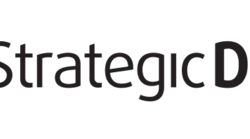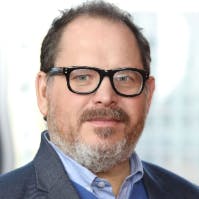By Scott Hutchenson, PhD, director of the Agile Strategy Lab at Purdue University and Smart Industry Base Camp presenter
It was my first real job. No more taking orders from drive-thru window, hauling wheelbarrow-loads of landscaping stones, or delivering balloon bouquets dressed like a clown. With a college degree in hand I had landed a job with a global company, an airline. I would be wearing suits, carrying a briefcase, and going on business trips. It was 1990 and I felt like the main character in one of the many movies of that era—young, ambitious, and ready to take on the world in the big city.
Purdue University's Scott Hutchenson
Within my first few weeks on the job I found myself assigned to a software-development project. It involved four different global companies including mine. Together they would be developing an ambitious system that they would all use. Back then we didn’t call this a “digital transformation” project but that’s exactly what it was. Each of the companies assigned some of their own people to work on the project and others were hired. In total there were about 400 of us. We had four years to complete the project and a budget of $115 million. At the time it was one of the most ambitious and costly software-development projects ever attempted. It was a “buy/build” effort that would stitch together off-the-shelf solutions with those we would develop ourselves. We were handed the “technical specifications” for what we were supposed to develop—75,000 pages of technical specifications. If stacked on the ground, that many sheets of paper would stand at over 37 feet tall!
After just over three years working on the project we got to what was called “integration testing” where we began to put together the different parts of the system to begin testing out the functionality. Although there was not a literal drumroll there was certainly a metaphorical one, the anticipatory ta-a-tat-tat followed by the throwing of the switch. The drumroll, however, was followed by silence. It didn’t work.
Over the next few weeks the mood devolved from a “no-problem, we-can-fix-it” pluckiness, to worry, to panic, to finger pointing and blame. The project was shut down, the partnership dissolved. It stands as one of the largest software development failures in history. Did I mention this was my first job? Quite the resume builder.
So, what happened? Why, despite an ample budget, plenty of bright people, and that 75,000-page instruction manual did it fail? As I would come to understand much later, we were dealing with a complex challenge as if it were a complicated problem. Technically it should have worked. Although there were some novel aspects of the system architecture, it was entirely feasible. On the surface it seemed merely technically complicated. Lurking beneath the complicated was complexity. What made it complex? Four different organizations, four different organizational cultures, four different agendas, and issues of trust and turf.
The nearly 30 years from that experience to now has led me on a path to try and better understand how complex, transformational work gets done, how complex is different than complicated, and why we often have a hard time differentiating between the two. The last two-thirds of those 30 years have been spent at Purdue University. Purdue is a place that has never shied away from the complicated. Established as a land-grant university through the Morrill Act of 1862 signed by President Abraham Lincoln, Purdue and the other land grants were founded to focus on the “agricultural and mechanical arts.” Purdue has a rich heritage of attracting faculty and students who have tackled a great may technical problems and humankind is better off because of their efforts. Known as the “cradle of astronauts,” more Purdue graduates have gone to space than any other university’s alums.
The establishment of the Purdue’s of the world was part of a bigger transformation that was occurring in the United States—the industrial revolution. This would be an era in which we conquered the complicated with remarkable success. We built the first skyscrapers, airplanes, and automobiles, and saw prosperity rise at pace never before seen.
People like Fredrick Taylor, the father of “scientific management,” told us that organizations were like machines and that the people who worked for them were cogs in the rotating wheels of progress. This metaphor of the organization as machine became so dominant that it shaped the way we think of nearly everything and the way in which we organized our companies as well as our communities. Often, we think of digital transformation in the same way—a new set of tools to tweak the machine.
Transformation, however, is not a mere tweaking.
This way of thinking about the world also shaped many of the tools, insights and processes that we’ve relied on as we strived for greater levels of efficiency and higher levels of production. These became ways to tweak the metaphorical machines to reduce waste and increase output. The discipline of engineering, root-cause analysis, strategic planning, project management, total quality management, lean, and six sigma are all tools that can trace their roots back to Fredrick Taylor’s scientific management.
This problem-solution mindset, however, has seemingly hit a wall. We are running up against a set of challenges that stubbornly won’t respond to our industrial-age approaches. The tools in our toolbox don’t work like they once did. Climate change, sustainable energy production, income inequality are the kinds of grand challenges that are resistant to the old tools and mindsets. We can’t engineer our way out of the climate change crisis. We can’t root cause analyze to find the silver bullet for income inequality.
These kinds of complex challenges can be seen in very real, often heartbreaking ways. People living in rural communities are ravaged by the impacts of opioid-use disorder. Once vibrant urban neighborhoods are dealing with blight and violence. We see it on our factory floors, in our hospital hallways, in our professional service offerings as well. We want to create more value for our customers, we want to be better stewards of the human and natural resources we require. We identify digital and other technology solutions and attempt to implement them. Sometimes they help tweak. Most of the time, though, they don’t bring the transformation for which we hoped.
At Purdue we’ve been designing and testing new approaches for managing complex, transformational challenges and the results are promising. One of our tools is called Strategic Doing. It is a strategy discipline specifically designed for open, loosely-connected networks. One of the reasons complex, transformational challenges are, well, complex is because they don’t exist within a command-and-control hierarchy. No single person, unit, or organization has all the knowledge, resources, carrots or sticks required. Strategic Doing allows people to form action-oriented collaborations quickly, move them toward measurable outcomes, and make adjustments along the way. This approach requires thinking differently, behaving differently, and doing work differently.
We’ve developed, tested, and refined this approach through practice; and we’ve taught it as a discipline to thousands of people, including university students and faculty as well as corporate and civic leaders. In May 2019 we published a book to further share what we’ve learned. Strategic Doing: Ten Skills for Agile Leadership [Wiley] outlines a new approach to leadership, one that is horizontal, adaptive and collaborative. It’s the way of thinking required to deal with complex challenges and wicked problems.
Along the way we’ve also heard inspiring stories from people in organizations like NASA and from places like Flint, Michigan and Puerto Rico. These are people who are using Strategic Doing to do amazing, transformational work. They’ve mastered the ten skills outlined in the book:
- Creating and maintaining safe spaces for deep, focused conversation
- Framing conversations with the right questions
- Uncovering assets, even the hidden ones
- Linking and leveraging assets to identify new shared-value opportunities
- Looking for the “Big Easy”
- Converting ideas to outcomes with measurable characteristics
- Starting slowly to go fast
- Designing short-term action plans that include everyone
- Using 30/30 meetings to review, learn, and adjust
- Nudging, connecting, and promoting to reinforce new habits of collaboration
For these leaders and others, the application of these skills serves as a sort of algorithm or operating system that they use to make progress in managing the complex, transformational challenges and wicked problems they face. These skills fill our toolbox with new tools. In Flint, Michigan a group of community leaders have developed their skills in these areas to deal with issues related to teen homicide, systemic racism, and food deserts. A group led by University of Puerto Rico is using Strategic Doing to design an entrepreneurship and innovation ecosystem as they rebuild after the devastation from Hurricane Katrina. Scientists at NASA have drawn on these insights to increase the productivity of their research in space life science. A large military contractor used these skills to develop an open innovation platform upon which they, and their partners, designed digital transformation solutions for the U.S. Navy.
In 2011 a group of Strategic Doing practitioners gathered at a state park in Indiana. They developed a credo, a set of beliefs that drive our work:
- We believe we have a responsibility to build a prosperous, sustainable future for ourselves and future generations
- No individual, organization, or place can build that future alone
- Open, honest, focused, and caring collaboration among diverse participants is the path to accomplishing clear, valuable, shared outcomes
- We believe in doing, not just talking and in behavior in alignment with our beliefs
Walking away from the software-development failure in the early 90s, I could have never anticipated the path that was ahead of me. Along the way I’ve met a remarkable group of people seeking answers to some of the same questions I was asking. Together we’ve developed a whole new discipline—the science and practice of complex collaboration, and it has shown remarkable progress helping enterprises of all sizes transform, digitally and otherwise. Purdue has become the global hub of this new discipline helping to incubate and develop tools and practices like Strategic Doing. This work has taken us to nearly every state in the U.S. and to nine different countries.
A few months ago, we offered a free online course and over 3,000 people enrolled from 143 different countries. It was offered on a social-learning platform so there was a lot of interaction among the learners. The conversations were remarkable. People from vastly different places, were dealing with widely different challenges—an engineer in Germany working on next-generation vehicle design. A public health worker in sub-Saharan Africa dealing with access to safe drinking water. Different contexts, different challenges, but the same dynamics of complexly.
If you are increasingly finding yourself facing stubborn problems, the sort that seem more complicated than they should be, consider whether what you might be facing is complexity dressed up in complicated’s clothing. It might be time to try out a new set of tools.
“This article was first published by the Digital Enterprise Society. Re-published with permission.





